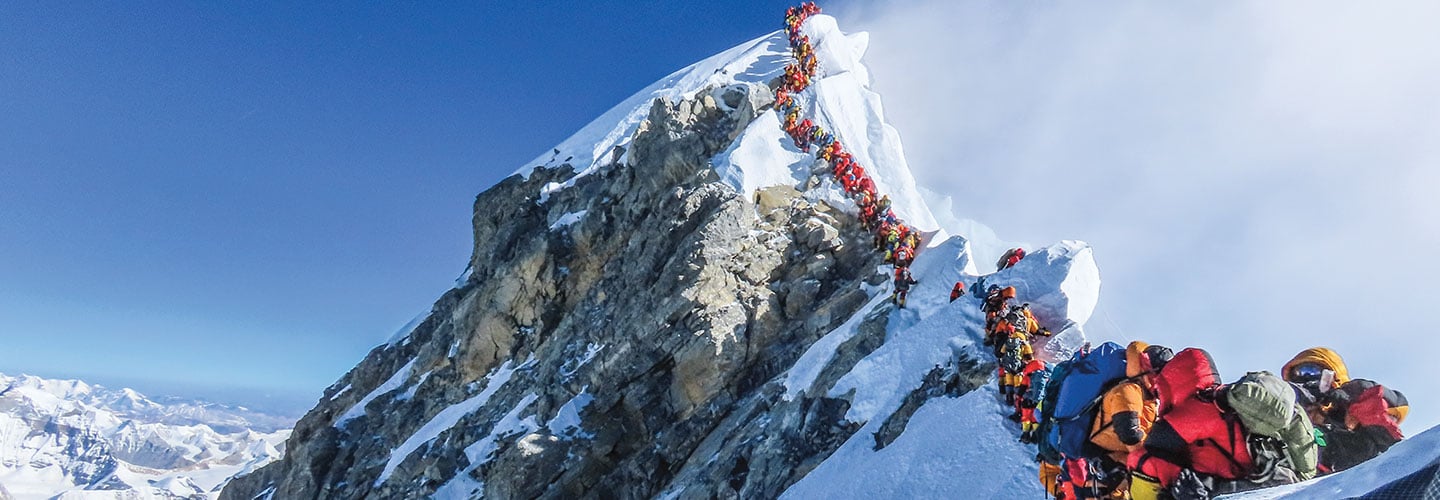Would you dare to climb Mount Everest, the world’s highest peak?
The wind howls. Blinding snowstorms appear out of nowhere. Temperatures drop to -40 degrees Fahrenheit.
But nothing is as creepy as the dead bodies.
You might see them right next to the main route. Sometimes the wind uncovers a pile of bones under the snow. Often, the cold preserves the bodies whole. They lie exactly where they died. For 20 years, a man from India lay curled up near a cave. Climbers named him “Green Boots” for his colorful footwear.
The bodies are gruesome. But they don’t keep climbers away. More people are climbing Mount Everest than ever before. Their goal is to stand on top of the world—and live to tell the story.
Mount Everest is the world’s highest mountain. Would you climb it?
Strong winds blow. Snowstorms come out of nowhere. Temperatures drop way below zero.
But the dead bodies are the creepiest part.
Many bodies line the route up the mountain. When the wind blows snow away, you may see a pile of bones. You may see whole bodies. The cold preserves them. The bodies lie where they died. For 20 years, a man’s body could be seen near a cave. He still had his green boots on. So climbers named him “Green Boots.”
The bodies are gruesome. But they don’t scare away climbers. The climbers want to stand on top of the world. And they want to survive to tell the story.
Would you dare to climb Mount Everest, the world’s highest peak?
The winds howl, blinding snowstorms appear out of nowhere, and temperatures drop to -40 degrees Fahrenheit.
But nothing is as disturbing as the dead bodies.
You might spot some along the main route. At times, the wind reveals a pile of bones under the snow. Often, the cold preserves the bodies whole—exactly where they died. For 20 years, the body of a man from India lay curled up near a cave. Climbers named him “Green Boots” for his colorful footwear.
Though the bodies are gruesome, they don’t deter climbers from pursuing their goal of standing on top of the world—and living to tell the story. In fact, more climbers than ever before are conquering Mount Everest.

